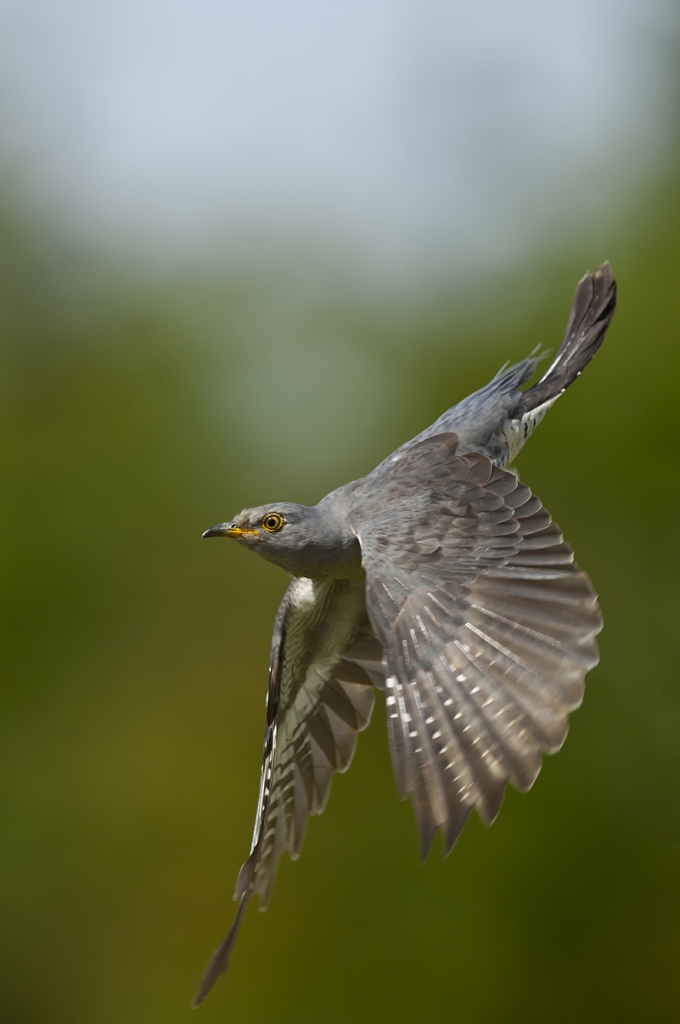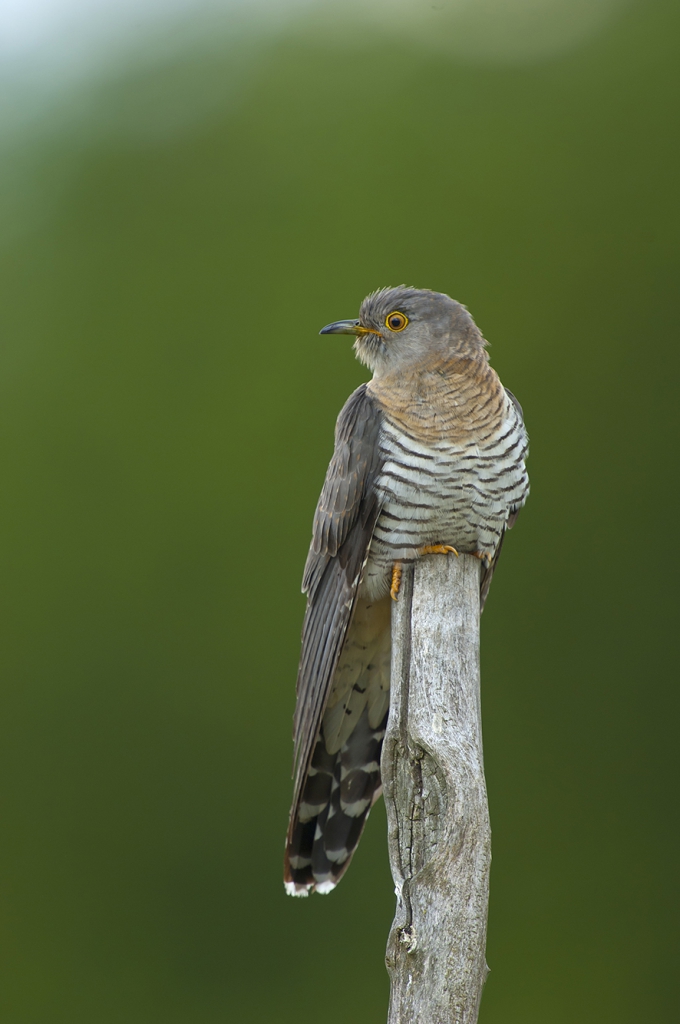Cuckoo
- Weapon race in the birds' world
As everybody knows, the cuckoo is a lazy, underhand bird that lays its eggs in other birds' nests. Each cuckoo prefers to lay its eggs in the nest of the same species where it grew up itself.
The cuckoo is good at laying eggs with a colour that resembles the host bird's eggs. Recent studies have shown that cuckoo host families try to prevent this egg swapping process by laying eggs with very recognisable patterns. So while the cuckoo tries to lay eggs that are as similar to the host’s eggs as possible, the host tries to lay eggs that are hard to imitate, and have patterns that only the host bird can recognise. A cuckoo in the nest means a lost breeding season for the host bird. Therefore, it makes sense to do everything possible to wise up to the cuckoo’s tactics so the host bird can throw the cuckoo eggs out of the nest.

How does a cuckoo know it is a cuckoo?
The young cuckoo is an adopted child, which has to grow up without any knowledge of its biological parents. On top of that, when it grows up in a different species, it is a bit of a mystery how the young cuckoo even finds out that it is a cuckoo. Many young birds are influenced by the adult birds that look after them and feed them when they are small. The famous animal scientist Konrad Lorenz showed in experiments that goslings would follow the first thing they saw when they came out of the egg, even a pair of red wellington boots. Young cuckoos first meet other cuckoos, when as an adult it winters in Africa. It is believed that the male cuckoo’s ability to cuckoo is innate and that the female cuckoo has an innate fondness for the cuckoo sound. It is not known if the male can recognise the female, or whether he just assumes that the female he attracts with his cuckoo calling is ”the one”.
Facts
The cuckoo is most known for his ”cuck-oo”. It slightly resembles a falcon when it flies, as it is grey, with slender pointed wings. It is 33 cm long and has a wingspan of 55-65 cm. The cuckoo has specialised itself in eating hairy butterfly larvae, which other birds like to avoid. The cuckoo is common and widespread in Europe. The most common host birds for the cuckoo’s nests are meadow pipit, western yellow wagtail, Eurasian reed warbler, sedge warbler and common whitethroat.


